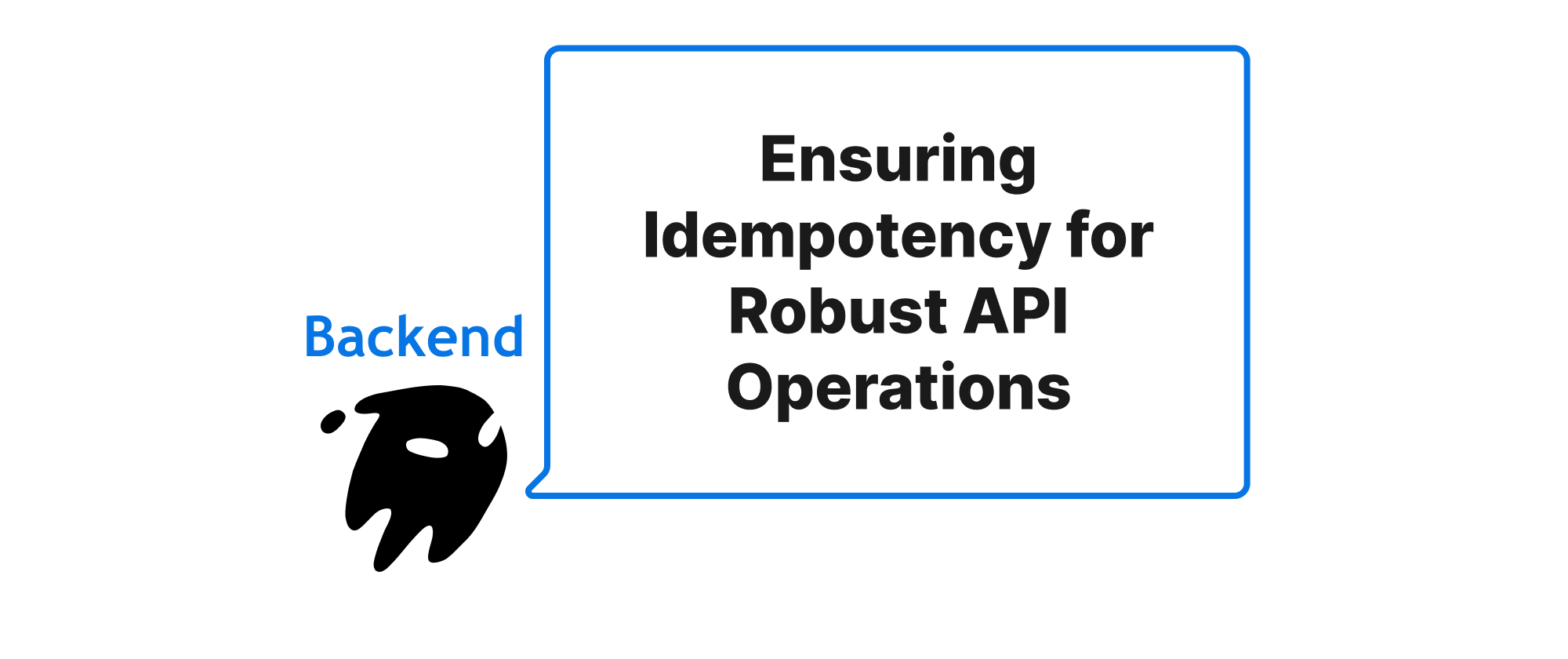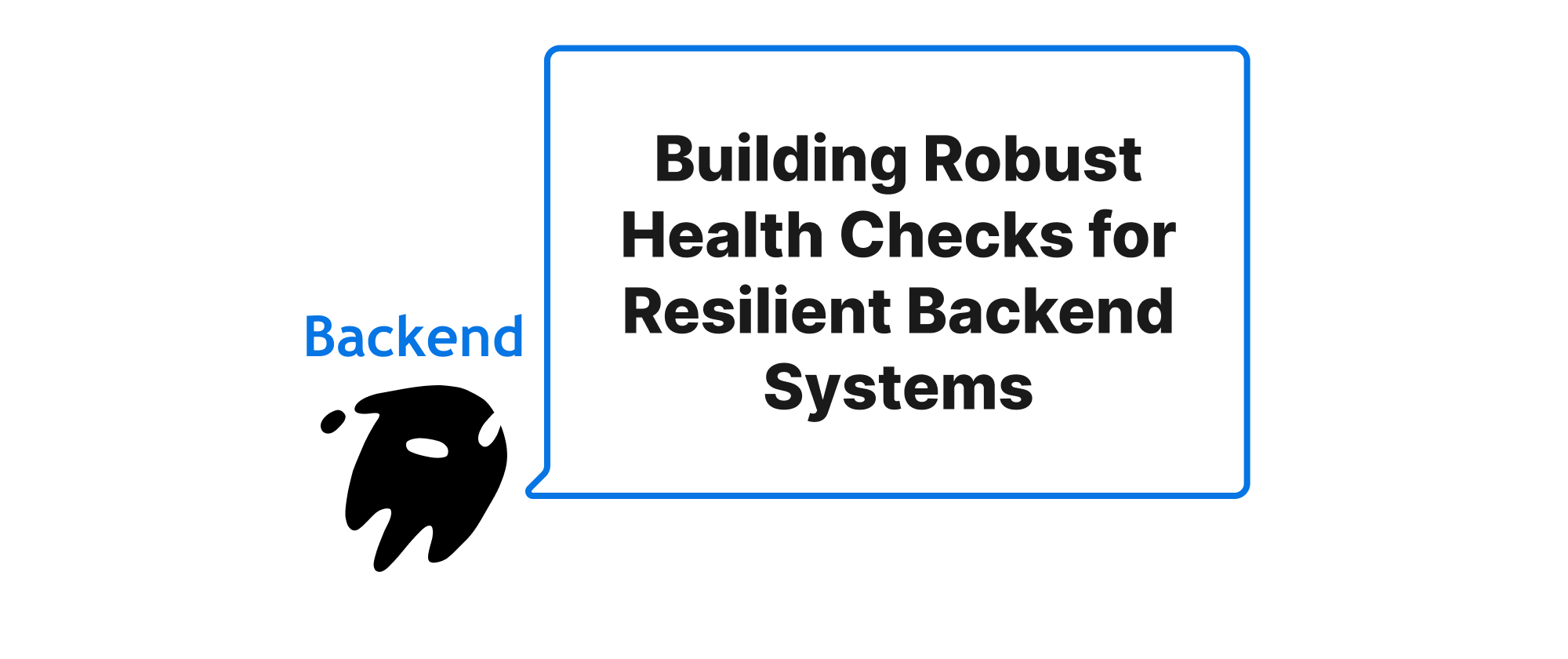Ensuring Idempotency for Robust API Operations
James Reed
Infrastructure Engineer · Leapcell

Introduction
In the intricate world of backend development, reliability and resilience are paramount. When designing and consuming APIs, one common challenge arises from network instability or transient errors: what happens if a request needs to be retried? For read-only operations (GET), retrying is generally safe. However, for operations that modify data, such as POST (creating resources) or PATCH (updating resources), simply retrying a request can lead to unintended side effects. Imagine a user submitting an order and due to a network glitch, the request times out. If the user or system automatically retries the submission without proper safeguards, they might end up with two identical orders, leading to data inconsistencies and customer dissatisfaction. This is where the concept of idempotency becomes crucial. By implementing idempotent keys in our APIs, we can ensure that calling an operation multiple times with the same parameters has the same effect as calling it once, thus making our systems more robust and user-friendly.
Understanding Idempotency and Its Keys
Before diving into the implementation details, let's clarify some core terms:
-
Idempotency: In the context of APIs, an operation is idempotent if executing it multiple times produces the same result as executing it once. This doesn't necessarily mean the response will always be identical (e.g., a
POSTmight return201 Createdfor the first successful attempt and200 OKor202 Acceptedfor subsequent attempts with the same idempotent key, indicating the resource already exists or the operation is already in progress). The key is that the state change on the server side is the same. -
Idempotency Key: This is a unique, client-generated string that accompanies a request. The server uses this key to detect duplicate requests. If the server receives multiple requests with the same idempotent key within a certain timeframe, it can identify them as retries of the original operation and avoid processing them again.
The principle behind idempotent keys is relatively simple: the client generates a unique identifier for a specific operation, and sends it along with the request. The server then stores this key (often along with the request's outcome) for a predefined duration. If a subsequent request arrives with the same key, the server can either return the previously computed result or confirm that the operation has already been successfully processed, without re-executing the core logic.
Implementation Strategies
Implementing idempotent keys typically involves these steps:
-
Client-side Key Generation: The client needs to generate a universally unique identifier (UUID) for each unique operation it attempts to perform. This key should be generated before the request is sent and reused for any retries of that specific operation.
-
Server-side Key Storage and Lookup:
- Preprocessing: Upon receiving a request with an
Idempotency-Keyheader, the server first checks if this key has been seen before and if its associated operation has completed. - Execution (First Attempt): If the key is new, the server proceeds to execute the core business logic. Before or after successful execution, it stores the
Idempotency-Keyalong with the request parameters, the response (status code, body), and an expiration timestamp. - Execution (Subsequent Retries): If the key is found, the server checks the status of the associated operation. If it completed successfully, it immediately returns the stored response from the initial successful attempt without re-executing the business logic. If the original operation is still in progress, the server might return a
409 Conflictor429 Too Many Requests(depending on policy) or wait for completion.
- Preprocessing: Upon receiving a request with an
-
Data Storage for Idempotency Keys: This data needs to be stored persistently and efficiently. Common choices include:
- Redis: Excellent for its speed and time-to-live (TTL) capabilities, making it ideal for storing keys with expiry.
- Database (e.g., PostgreSQL, MySQL): A dedicated table can store keys, request parameters, response data, and timestamps. This offers stronger consistency but might be slower than Redis for high-volume scenarios.
Code Example (Conceptual - Python Flask with Redis)
Let's illustrate with a conceptual Python Flask example using Redis for idempotency key storage.
import uuid import json from flask import Flask, request, jsonify, make_response import redis import time app = Flask(__name__) # Connect to Redis redis_client = redis.StrictRedis(host='localhost', port=6379, db=0) # TTL for idempotency keys (e.g., 24 hours) IDEMPOTENCY_KEY_TTL_SECONDS = 24 * 60 * 60 @app.route('/api/orders', methods=['POST']) def create_order(): idempotency_key = request.headers.get('Idempotency-Key') if not idempotency_key: return jsonify({"message": "Idempotency-Key header is required"}), 400 # Prefix the key to avoid conflicts with other Redis data redis_key = f"idempotent_request:{idempotency_key}" # Check if this key has been processed before cached_response_str = redis_client.get(redis_key) if cached_response_str: cached_response = json.loads(cached_response_str) print(f"Returning cached response for key: {idempotency_key}") # Reconstruct the Flask response object response = make_response(cached_response['body'], cached_response['status_code']) for header, value in cached_response.get('headers', {}).items(): response.headers[header] = value return response # Simulate some processing time and potential database interaction try: # --- Start actual business logic for creating an order --- order_data = request.json if not order_data or 'item' not in order_data or 'quantity' not in order_data: return jsonify({"message": "Invalid order data"}), 400 # In a real app, this would involve database insertion, external calls, etc. # For demonstration, we'll just acknowledge the order time.sleep(0.5) # Simulate work new_order_id = str(uuid.uuid4()) # Unique ID for the new order response_body = { "status": "success", "message": "Order created successfully", "order_id": new_order_id, "item": order_data['item'], "quantity": order_data['quantity'] } status_code = 201 headers = {} # Any custom headers for the response # --- End actual business logic --- # Store the successful response response_to_cache = { "status_code": status_code, "body": response_body, "headers": headers } redis_client.setex(redis_key, IDEMPOTENCY_KEY_TTL_SECONDS, json.dumps(response_to_cache)) return jsonify(response_body), status_code except Exception as e: # Handle potential errors during processing print(f"Error processing order: {e}") error_response_body = {"status": "error", "message": "Failed to create order"} status_code = 500 # Consider caching error responses too, if retry behavior for errors should also be idempotent # redis_client.setex(redis_key, IDEMPOTENCY_KEY_TTL_SECONDS, json.dumps({"status_code": status_code, "body": error_response_body, "headers": {}})) return jsonify(error_response_body), status_code if __name__ == '__main__': app.run(debug=True, port=5000)
Client-side Usage (Example with curl):
First attempt:
curl -X POST \ http://localhost:5000/api/orders \ -H 'Content-Type: application/json' \ -H 'Idempotency-Key: a-unique-key-12345' \ -d '{ "item": "Laptop", "quantity": 1 }'
Output (example):
{ "order_id": "b3e9a0f4-5d6e-4c8a-9f0e-2c7b5a1d3f4e", "item": "Laptop", "message": "Order created successfully", "quantity": 1, "status": "success" }
Subsequent attempt with the same Idempotency-Key:
curl -X POST \ http://localhost:5000/api/orders \ -H 'Content-Type: application/json' \ -H 'Idempotency-Key: a-unique-key-12345' \ -d '{ "item": "Laptop", "quantity": 1 }'
Output will be identical to the first attempt, but the backend logs will show "Returning cached response...". The order will not be duplicated.
Application Scenarios
Idempotent keys are particularly valuable in scenarios where retries are common or critical:
- Payment Processing: Preventing duplicate charges for the same transaction. If a payment gateway times out, the client can retry with the same key without fear of double billing.
- Order Fulfillment: Ensuring that a customer's order is processed exactly once, even if network issues cause retries.
- Resource Creation: Only creating a resource once (e.g., creating a user account, initiating a workflow) even if the request is sent multiple times.
- Event-Driven Architectures: When processing events from a message queue, consumers often retry if processing fails. Idempotent keys can prevent duplicate side effects if an event is redelivered.
- Third-Party API Integrations: When calling external services, idempotent keys provide a safe mechanism for retries, especially if the external service also supports them.
Conclusion
Implementing idempotent keys is a fundamental practice for building resilient and reliable backend APIs, especially for operations that modify server state like POST and PATCH requests. By generating a unique key on the client and caching request outcomes on the server, we can safely retry operations, preventing unintended side effects such as duplicate resource creation or double charges. This greatly enhances the user experience and the overall stability of our systems. Ultimately, an API that gracefully handles retries through idempotency is a more robust and trustworthy API.


